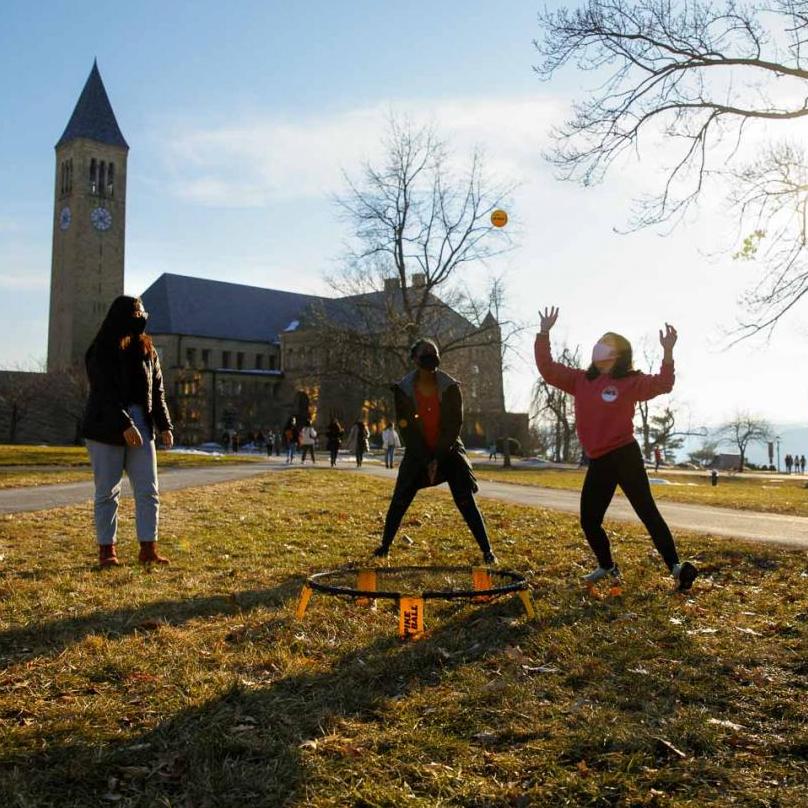A papyrus village survey from the second century B.C.E., included in the new book “Households in Context: Dwelling in Ptolemaic and Roman Egypt,” gives a snapshot of an ancient Egyptian household: A woman named Tharetis who managed a shrine to the goddess Isis lived with her 70-year-old husband and their adult son, a priest.
“We know nothing else about this family, but the description is still particular enough that when I read it, I feel a sudden jolt – the sense of encountering real, once-living people in their irreducible individuality,” said Caitie Barrett, associate professor of classics in the College of Arts and Sciences. “The remains of ancient daily life have an extraordinary power to impact our imagination and engage our empathy for people in the past.”
Many pieces of archaeological evidence – textual, material, and visual – are examined in “Households in Context,” which Barrett co-edited with Jennifer Carrington, Ph.D. ’19. The collection, the product of a 2018 conference at Cornell, shifts the archaeological perspective from public and elite spaces such as temples, tombs and palaces to everyday dwellings and interactions of families. (The village register that mentions Tharetis comes up in the chapter “The Papyrus Trail” by classics scholar Dorothy Thompson).
The book highlights two eras of Egyptian ancient history – Ptolemaic (305 to 30 B.C.E.) and Roman Egypt (30 B.C.E. to C.E. 641) – that are understudied, according to Barrett. Contributors to the volume come from a broad range of disciplines, including archaeology, papyrology, history and art history; their chapters examine terracotta figurines, domestic architecture, private letters, legal petitions, amulets and more.
“By examining different kinds of evidence, we hope to be able to construct a more holistic picture of what life was like in this society,” said Barrett, an archaeologist who investigates everyday life.
The College of Arts and Sciences spoke with Barrett about the book.
Question: In archaeology, how do daily experiences, objects and images inform our understanding of ancient cultures?
Traditionally, historical accounts tend to represent households – insofar as they show up in big-picture historical narratives at all – as essentially passive entities, affected by important events rather than affecting them. We tend to imagine history as being made in other spaces, such as the royal court, the battlefield or the temple. And, of course, there’s a gendered element to this downplaying of the historical importance of domestic space, having to do with modern scholars' own pervasive – and reductive – associations of the domestic sphere with “women’s work.”
But in fact, when we look at the evidence from ancient household contexts, events in the domestic sphere weren’t just reactions to developments that “really” occurred somewhere else. The everyday objects that people lived with – the actual material of their daily lives – played active roles in shaping ancient people’s experiences and the ways they saw and understood the world. Houses, as I see them, can actually be laboratories for social, political, economic and religious change.
Q: Tell us about the Egypt covered in this book, during the Ptolemaic and the Roman eras.
For almost 1,000 years, after the end of what we call the Pharaonic period of Egyptian history, Egypt was very much part of the Greco-Roman world. The Ptolemaic and Roman periods were a fascinating and turbulent time for Egypt, with people from many different backgrounds and cultures interacting and living side by side. The population included not only people who identified as Egyptians and Greeks (and often both simultaneously), but also substantial numbers of people of Jewish, Arab, Thracian and many other backgrounds.
Egypt in these periods is an important case study for questions about cultural entanglement, empire, globalization and the ways that people negotiated power relations and identities in antiquity. But we still know surprisingly little about how these dynamics played out in the everyday world of people’s domestic lives.
Q: Would you give an example or two from your investigations of household sites of a finding that revealed something about a society or culture?
I co-direct the Casa della Regina Carolina (CRC) Pompeii Project, a joint project of Cornell and the University of Bologna, together with Kathryn Gleason [professor emerita of landscape architecture in the College of Agriculture and Life Sciences] and Annalisa Marzano [University of Reading]. We are excavating a domestic garden within a large, wealthy house.
A lot of published scholarship on gardens like this tends to talk about them in terms of the goals and experiences of the house owners, who in this case would have belonged to a privileged class at Pompeii. But we can also see the plantings and other garden features as evidence for the work, experiences and knowledge of the gardeners, who would likely have been enslaved or formerly enslaved. And we’ve found concrete evidence of these individuals' specialized skill and expertise – for example, miniaturizing trees in a bonsai-like way, or taking advantage of local geology and soil features to cause plants to be unusually productive. I find it exciting to try to recover at least some aspects of the lives of people whose perspectives aren’t well-represented in texts written by and for wealthy elites.





